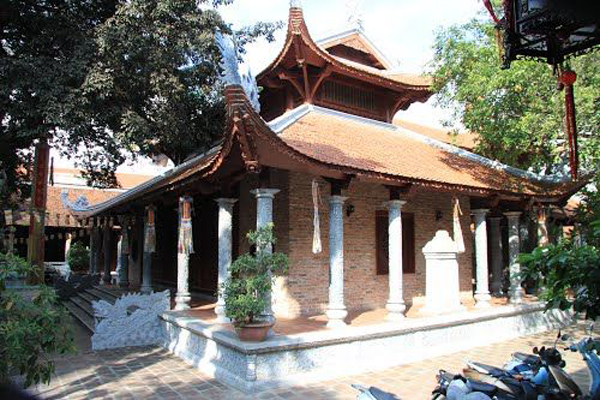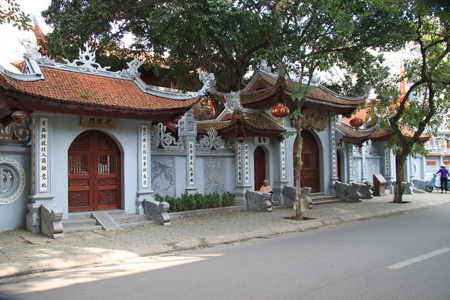Hoe Nhai Pagoda (Chua Hoe Nhai). Official name: Hong Phuc tu (pagoda of Immense Beatitude). No. 19 Hang Than street (Coal Street) in Hanoi. It seems that the first construction dates back to the Ly dynasty (1010 - 1225). Numerous repairs (1678, 1899, 1952).

The pagoda was frequented by the Ly court and members of the royal family. At first, it was very large; its superficies was reduced to the present dimensions since the beginning of French colonization. Among the steles, the most important one is that which dates back to 1703 (24th year of the Le Chinh Hoa reign). It allows historians to locate exactly the site of victory over the Mongols at Dong Bo Dau on the 21st of January 1258, the victory that liberated Thang Long (Hanoi). The pagoda is the cradle of Tao Dong, one of two main dhyanist sects (Thien) in Vietnam. It is noteworthy for the ancient Buddha statue sitting on the back of a king in a reclining position (symbol of submission to temporal power).



